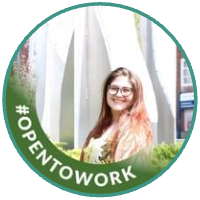The State of Campus Recruiting
Click here for the webinar recap.
Each quarter, Parker Dewey brings together corporate leaders, universities and organizations supporting students, and all those interested in addressing the challenges of college-to-career. We touch on hot topics facing institutions and recruiters, and welcome questions in advance from our audience members.
In this session, we heard directly from current students around insights and key takeaways from Parker Dewey's Annual Student Sentiments on Campus Recruiting Survey Report.
Featuring perspectives from:
 |
Max Choate Current student at the Cal Poly Orfalea College of Business |

|
Skyler Michaud Class of 2022 graduate of Massachusetts Bay Community College |
.png?width=140&height=140&name=Lori%20(2).png)
|
Lori Sparger Chief Operating Officer and Chief Innovation Officer at Purdue University’s College of Liberal Arts
|
Watch the replay
The Top 5 Takeaways on Campus Recruiting from College Students
In the 2023-2024 Students Sentiments on Campus Recruiting Report, college students and recent grads shared what was most useful as they worked to secure jobs and internships. The survey highlights that students are seeking real, professional, paid work experiences to help them explore careers, and that many of them are thinking about their careers earlier in their college journeys and want earlier engagement from employers.
With the recent findings as a backdrop, during last week’s State of Campus Recruiting session, the panel discussed the most effective methods for employers to engage with students,
This session featured perspectives from:
-
Max Choate, current student at the Cal Poly Orfalea College of Business
-
Skyler Michaud, Class of 2022 graduate of Massachusetts Bay Community College
-
Lori Sparger, Chief Operating Officer and Chief Innovation Officer at Purdue University’s College of Liberal Arts
Explore the top five takeaways from the panel below, or watch the webinar recording here!
Companies who aren’t engaging first- and second-year students (effectively) are missing out on top candidates, especially first-generation students.
Students are thinking about their futures earlier in their college careers. In this year’s report, 77% of college students started thinking about their career plans during their second year or sooner, while 69% of college students wish employers had begun to engage them earlier than they did.
Lori emphasized that first-generation students in particular don’t have the networks or experiences to appreciate how specific companies or roles could align to their areas of interest. Beyond supporting students, companies who don’t make this effort are likely to ignore a large pool of qualified candidates. “If employers aren’t engaging and aren’t finding ways to help become part of the social capital network for students early, then there will be lots of students they miss out on,” Lori said. And to be effective, the effort needs to go beyond inviting students to events—while they may offer valuable content, many students aren’t responding unless they are already interested in the role.
This rang true for Skyler, who shared that with no proactive outreach from companies, she began considering full-time roles later than she wished. “I’m a first-generation student, and it was all a little bit confusing and messy for me. When I first started school, I was focusing on my full-time job at Panera and not really in my industry so I could pay the bills,” she said. “I definitely felt like my job search [later on] was really rushed, which is how I ended up in a contract position.”
Early engagement also goes hand-in-hand with fairly compensating students for their efforts.
Today, 95% of college students rated “real, paid work experience with an organization” as the most valuable way to engage them. While organizations may offer unpaid or underpaid opportunities and simulations with the best intentions, they risk eliminating potential candidates and damaging the employer brand.
As a self-supporting student, Skyler highlighted how compensation guided her decisions around which opportunities to accept and reject. “I got this really amazing opportunity to do a summer internship with Dana Farber Cancer Center, but unfortunately the stipend couldn’t accommodate my move and affording rent in Boston, so I had to turn it down,” she said. “That’s why I took the job at [Takeda Pharmaceuticals], which was $20 an hour more, and then I was really able to support myself… and still get industry experience.” Skyler also shared that she “couldn’t really [begin to] think about internships until there were [funded] programs” available to her, further highlighting how companies still offering unpaid opportunities automatically exclude top talent.
Beyond accessibility, fair payment also signals company values to students. “My ideal option is some sort of paid event,” Max added. “Micro-Internships have been an opportunity to have a trial where you get paid, without feeling like you’re investing time without the financial reward.” This helps students learn about the company, and feel valued by them as they’re compensated for doing real work.
What college students need most right now is more opportunities to build their resume.
Students value real experiences to build their resumes, gain skills, and make informed career choices. With 11 Micro-Internships under his belt, Max shared just how valuable real, professional projects have been in his skill development. “It’s kind of been a way to practice running my own business,” Max said. “[My projects] have taught me a lot of skills like time management and communicating with people.”
The Micro-Internships also allowed Max to build the types of relationships with professionals that don’t normally occur in the recruiting process. “I started doing web design Micro-Internships, and that was a cool opportunity because I was able to do them independently,” he said. “I was the only one having the meetings with the clients and I wasn’t just having work delegated to me, but through being able to do these different projects whether with the industry professionals or by myself, I definitely think it confirms my interest in something that crossed over design, business, [and] computer science.”
Micro-Internships also help students “try things early to start to learn what they actually like and to learn what they would absolutely hate doing for the rest of their lives,” Lori explained, especially for liberal arts students or those with more general majors. Not only does this help students, but it also addresses the attrition issue faced by so many organizations.
She also noted that with packed schedules, students want opportunities where they can optimize their learning in shorter periods of time. “I think students are busier than people realize, whether it’s a student like Skyler who’s working or students who are uber involved in activities, and so I think everyone needs to be very clear about what students are going to get out of an opportunity, whether it’s an information session or anything else,” she said.
The top obstacle in securing a job after graduation is lack of professional network—and career fairs aren’t necessarily helping.
For employers and students, networking is vital, and for students, the top obstacle in securing a job after graduation is lack of professional network. While career fairs aren’t completely obsolete, the panelists agreed that to drive student interest they must be paired with other events to create authentic relationships that generate real opportunities.
Lori explained that more traditional methods like career fairs unintentionally filter out candidates who might not fit the bill upon first glance. “What tends to happen a lot with [career fairs] is that [students] really get brushed aside” if they don’t appear to have the “right” major,” she explained. “They’re told they’re not who the company is looking for because that’s not who that particular recruiter is looking for. It ends up with a lot of students deciding that these companies are not for them,” damaging employer brand and shrinking the talent pool. “I’m not sure what the long-term efficiency of career fairs is,” Lori continued. “Students look at the list and if there aren’t companies that they know, then they don’t want to show up.”
From Max’s perspective, career fairs have become an opportunity for students to practice speaking with employers—without any intention of actually exploring opportunities. “I have not yet attended a career fair,” Max said. “Really, I think the sentiment for a lot of students, [career fairs] have become less of an opportunity to see, ‘Do I want to work at this company?’ and more of [an opportunity to] practice my [interview] skills and make sure I can actually talk, and then go to the company I actually care about.” As a result, the resources used by employers planning for and attending career fairs might be better used elsewhere.
Noting the certain “vibe” of career fairs, Skyler also expressed a preference for “meeting employers on a more casual basis where there’s less pressure.” She added, “The way I’ve built my network is getting involved with anything and everything I see on campus that I have time for. It’s never really career fairs… it’s been networking opportunities, fundraisers, meetings, or workshops, where I’ve really gotten to meet people.”
81% of students are seeking Micro-Internships to gain experience, learn about employers, and build professional networks.
For students, the best opportunities expose them to the real-life version of their chosen career fields. That’s why 81% of students are seeking Micro-Internships to gain experience, learn about employers, and build professional networks — more than any other campus recruiting activity students weighed in on.
While Micro-Internships can easily extend into longer-term opportunities, students appreciate their value as a tool for learning and resume-building as they explore careers. “I’ve [done] Micro-Internships as more of an opportunity to network with people, get a lot more advice, get exposure to different things, try out different things with less of the idea being ‘Oh my God, I need to get a full-time job out of this,’” Max explained. “However, there’s definitely been a lot of [Micro-Internships] that have led to further projects because almost every time they’ve gone super well.”
For students with no previous experience, these short-term projects are a great method to get a foot in the door. “In the biotech field, I think that sometimes it can be highly technical, but I’m really appreciative of the entry-level Micro-Internships that require no previous knowledge so I can really get kind of a snapshot of what something’s like so I can see if it’s worth me taking classes on,” Skyler said. “I found I really got some great mentors and built quite a great network from some of these projects.”
Access the full report on how students want to engage with employers, and join us on June 14th as we show how easy it is to incorporate Micro-Internships into your campus recruiting strategy.
